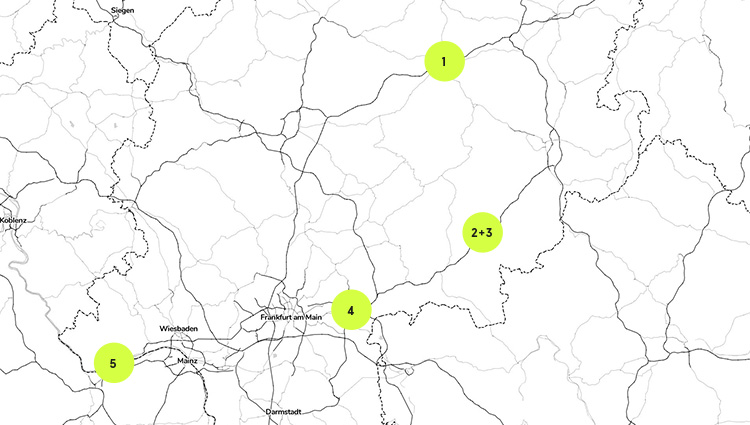
Alsfelder Märchenhaus
Like Steinau and Hanau, Alsfeld lies on the German Fairytale Route. A visit to the Alsfeld Märchenhaus is an experience for all generations. There is much to see and experience here. Visitors will discover of the lovingly decorated fairy tale rooms, in which the fairy tales of the Brothers Grimm are depicted. On two floors they will meet, among others, Hansel and Gretel, Frau Holle or the bad wolf in grandmother's bed. The Hexestubb in the fairy tale house offers an eerie atmosphere. Take a look into the witch's cauldron and examine the many small details! On the second floor, still above the fairy tale rooms and the storytelling room, the fairy tale house holds a precious treasure . An overwhelming and historical collection of dollhouses from over two centuries are privately owned by the Reith family from Herbstein and have been exhibited in the fairy tale house. Feel the uniqueness and the love with which the parlors are collected!

Brüder Grimm-Haus und Museum Steinau
The historic kitchen of the Amtshaus has been reconstructed as it may have looked in the days of the Grimm family. Jacob and Wilhelm Grimm have gone down in European intellectual history as linguists and the founders of German studies. Their scientific work, including the German Dictionary, which is still important and valid today, is documented here with numerous first editions. Ludwig Emil Grimm, the youngest brother, had studied at the Munich Art Academy and made a name for himself primarily as a graphic artist. The Ludwig Emil Grimm Cabinet shows a cross-section of his graphics and drawings. The upper floor is dedicated to the most famous work of the Brothers Grimm, the "Kinder- und Hausmärchen" (Children's and Household Tales), which have been translated in more than 160 languages and dialects and are well known on all continents. In very differently designed rooms, visitors are enabled to find their way into their own fairy tale world in a playful yet scientific way.

Schloss Steinau mit Brüder-Grimm-Gedenkstätte
The closed Renaissance complex of Steinau Castle was built from 1525 by Philip II and Philip III of Hanau-Münzenberg, incorporating older medieval structures. The core castle was enclosed from 1551 with a pentagonal Zwinger and four corner bastions, which had casemated basements for defense. Steinau Castle is one of the few early modern castle complexes to have almost completely survived. The entire outer defense system with deer moat and retaining wall is an essential element of one of the earliest bastioned castle complexes ever to have survived from the German region.

Hanau is home to the first Brothers Grimm hands-on museum in Germany. The museum is made by and for children: together with the Hanau Children's and Youth Office, the municipal museums have set up their own children's committee for GrimmsMärchenReich. The committee has carefully examined the conception and design of the hands-on museum, advised the makers during its creation and actively contributed to the design of the exhibition from start to finish. During their visit, children and adults go on an interactive and multimedia adventure through seven fairytale worlds and even become fairytale characters themselves. In the process, they walk through the Whispering Hallway, explore fairytale landscapes in costumes in the Room of Transformation, enter the Reading Realm with books, listening stations and sign films, and learn exciting stories from the childhood and lives of the brothers Jacob, Wilhelm and Ludwig Emil Grimm.

Franz (1765-1844) and Georg Brentano (1775-1851), two brothers of the poet siblings Bettine and Clemens, acquired the property, which was built in 1751, in 1804. It was owned by the family until 2014, which is why it is only called "Brentano House". The domicile is considered to be one of the intellectual and cultural centers of Rhine romanticism. The numerous guests from politics and culture include Johann Wolfgang von Goethe, the Brothers Grimm and Freiherr vom und zum Stein. Originally preserved rooms give a unique impression of the living culture and the lifestyle of the time. Above all, the rooms on the upper floor – including the two rooms in which Goethe lived in 1814 – have retained their unique atmosphere for over 200 years. The building is to be completely renovated and carefully restored over the next few years. The aim is to make the Brentano house accessible to the public as a historical place and cultural heritage of German romanticism.

